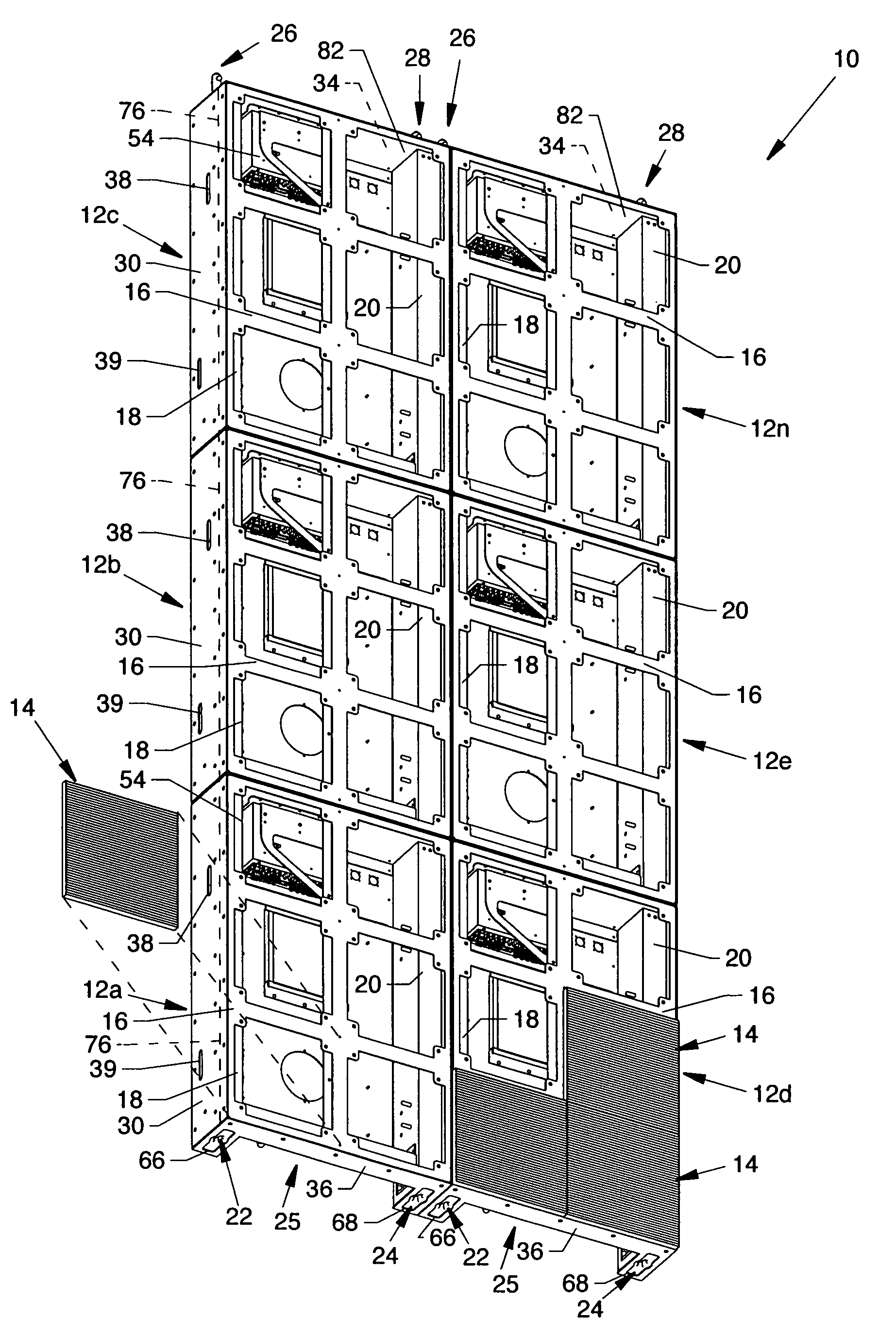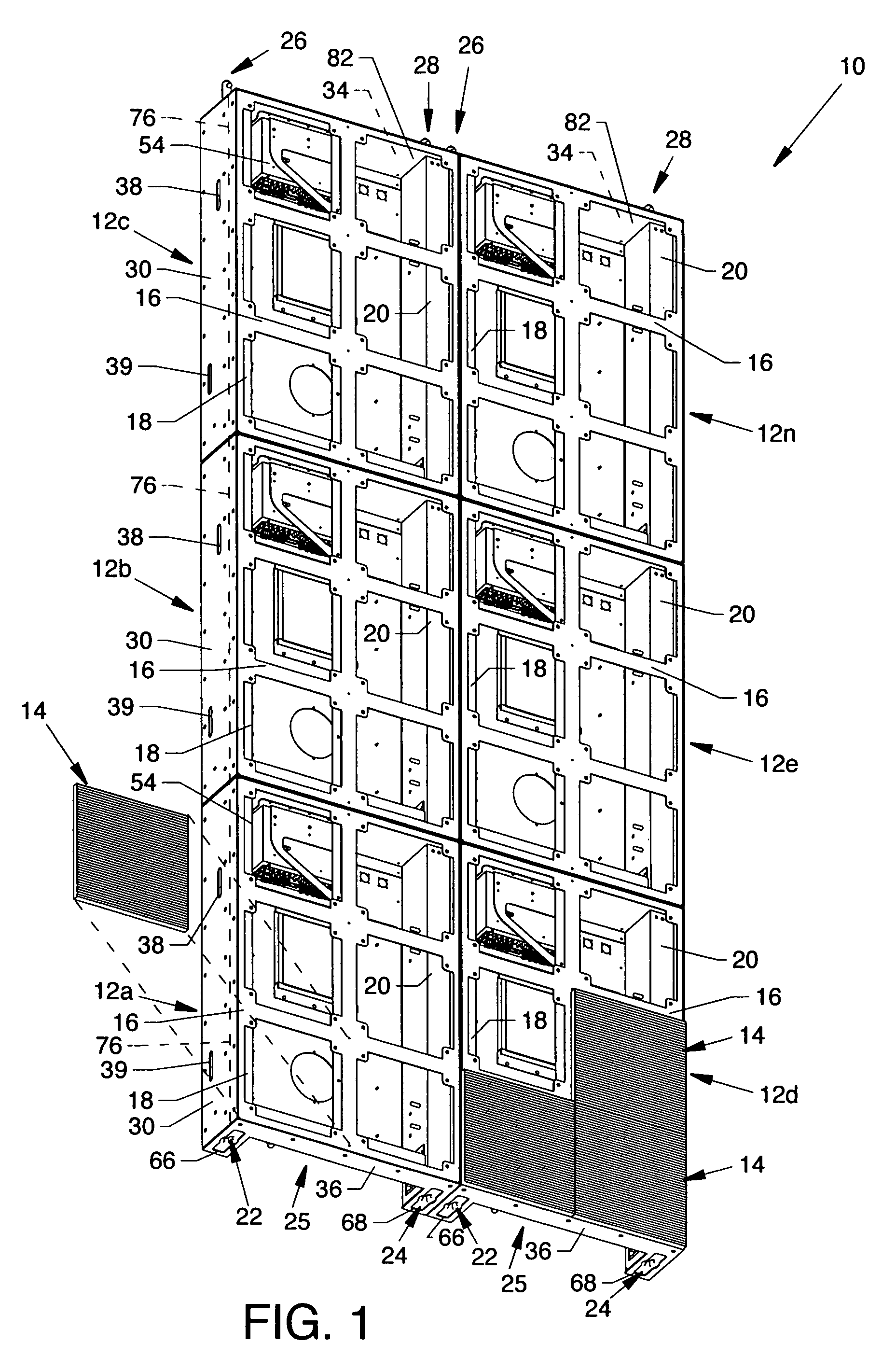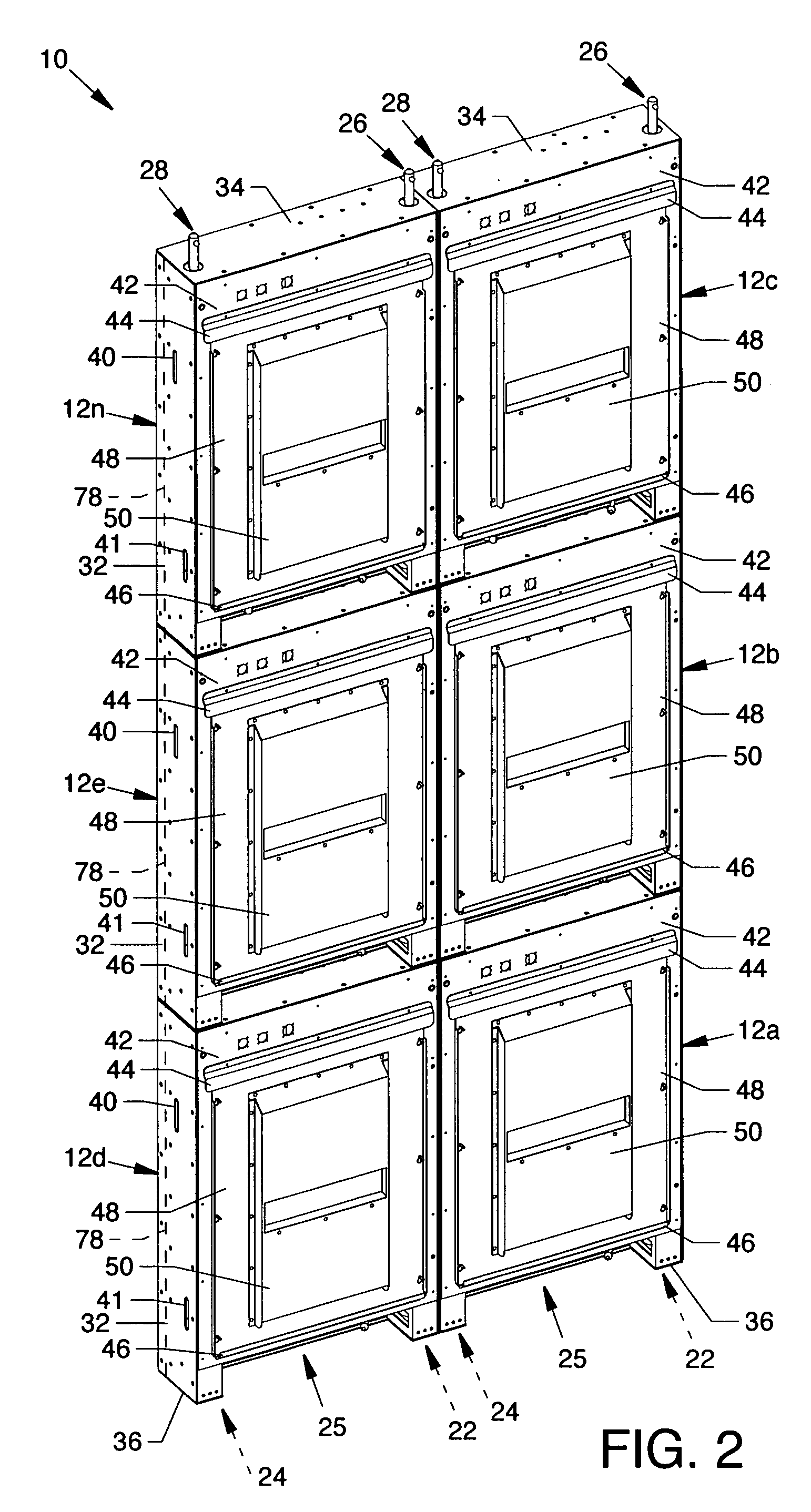Transportable electronic sign display system
a display system and electronic sign technology, applied in the direction of rod connection, identification means, instruments, etc., can solve the problems of expensive devices having difficult installation procedures, ineffective and/or cumbersome methods for attaching display cabinets, and ineffective methods for reducing installation time, reducing assembly and tear down time, and reducing setup time. , the effect of reducing the time of assembly and tear down
- Summary
- Abstract
- Description
- Claims
- Application Information
AI Technical Summary
Benefits of technology
Problems solved by technology
Method used
Image
Examples
Embodiment Construction
[0032]FIG. 1 is a partially exploded isometric front view of a transportable electronic sign display system 10, and FIG. 2 is an isometric rear view of the transportable electronic sign display system 10 each showing components of the present invention. The invention is comprised of a plurality of stacked modular cabinets 12a-12n where each modular cabinet 12a-12n is made of a light weight material such as aluminum or other suitable light weight material, including a plurality of electronic display modules 14. For the purpose of brevity and clarity, only four electronic display modules 14 are shown in FIG. 1. Each of the modular cabinets 12a-12n includes a mounting panel 16 for accommodation of a plurality of the electronic display modules 14 where the electronic display modules 14, mounting panel 16 and the four-point latching system are described in U.S. Pat. No. 7,055,271 entitled “Electronic Display Module Having a Four-Point Latching System for Incorporation into an Electronic ...
PUM
 Login to View More
Login to View More Abstract
Description
Claims
Application Information
 Login to View More
Login to View More - R&D
- Intellectual Property
- Life Sciences
- Materials
- Tech Scout
- Unparalleled Data Quality
- Higher Quality Content
- 60% Fewer Hallucinations
Browse by: Latest US Patents, China's latest patents, Technical Efficacy Thesaurus, Application Domain, Technology Topic, Popular Technical Reports.
© 2025 PatSnap. All rights reserved.Legal|Privacy policy|Modern Slavery Act Transparency Statement|Sitemap|About US| Contact US: help@patsnap.com



